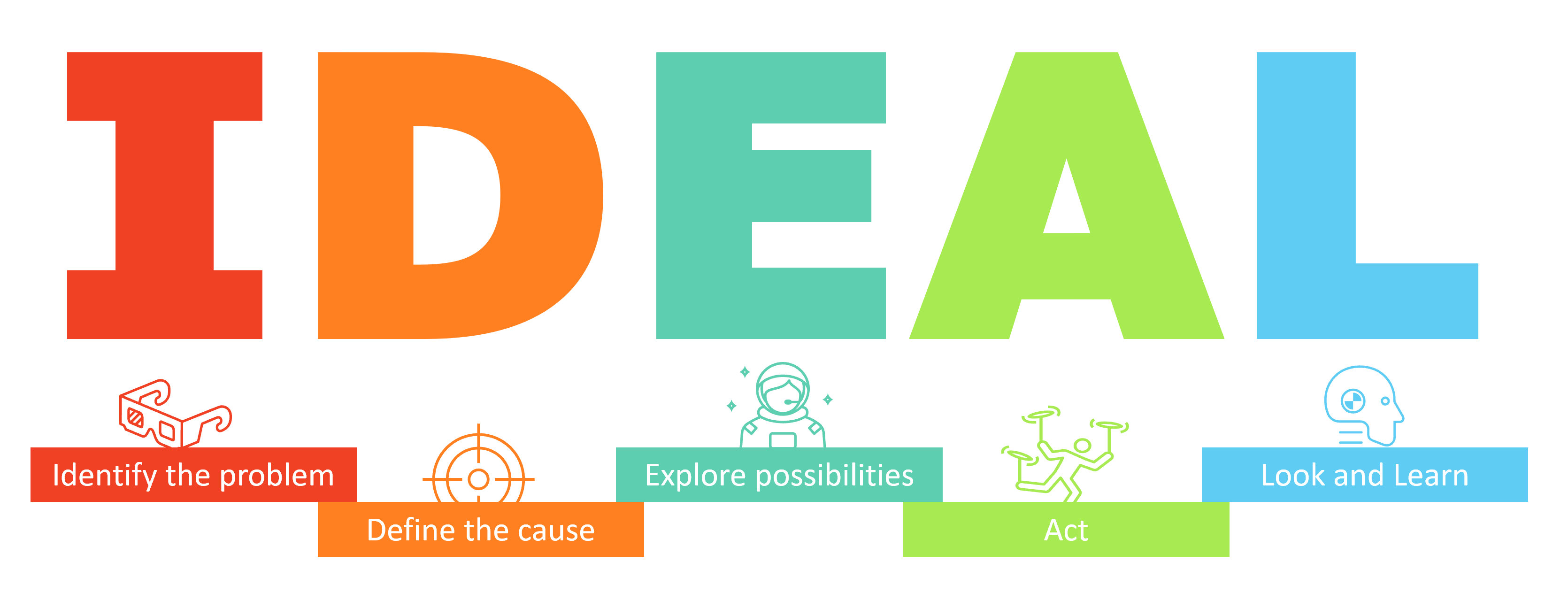Problem Solving
Problem Solving Templates
Our Problem Solving Templates are here to streamline your problem-solving process. Whether you’re identifying issues, brainstorming solutions, or implementing changes, we have the tools you need to succeed. Best of all, they’re free to use, share, and distribute as you see fit.
Problem solving is the process of finding solutions to complex, ambiguous, or uncertain situations or challenges. It involves identifying, analyzing, and evaluating the problem, and then developing and implementing a solution or course of action that addresses the root cause of the problem.
The steps in the problem-solving process typically include:
- Identify the problem: Clearly define the problem and its impact.
- Gather information: Collect data and gather information to better understand the problem.
- Analyze the problem: Break down the problem and its causes to identify potential solutions.
- Develop and evaluate solutions: Brainstorm potential solutions, evaluate their feasibility, and select the best one.
- Implement the solution: Create an action plan, and put the chosen solution into action.
- Evaluate the results: Assess the effectiveness of the solution, and make adjustments if necessary.
Some problem-solving techniques include:
- Root cause analysis: A method for identifying the underlying causes of a problem.
- SWOT analysis: A tool for evaluating an organization's strengths, weaknesses, opportunities, and threats.
- Brainstorming: A technique for generating creative ideas and potential solutions.
- Fishbone diagram: A visual tool for identifying the potential causes of a problem.
- Pareto chart: A chart that helps identify the most significant contributing factors to a problem.
Effective problem solvers typically possess the following qualities:
- Critical thinking skills: The ability to analyze information, evaluate alternatives, and make sound decisions.
- Creativity: The ability to generate innovative solutions to complex problems.
- Persistence: The willingness to keep trying different approaches until a solution is found.
- Adaptability: The ability to adjust and change course as needed.
- Communication skills: The ability to communicate effectively with others and collaborate on solutions.
- Snippet from Wikipedia: Problem solving
Problem solving is the process of achieving a goal by overcoming obstacles, a frequent part of most activities. Problems in need of solutions range from simple personal tasks (e.g. how to turn on an appliance) to complex issues in business and technical fields. The former is an example of simple problem solving (SPS) addressing one issue, whereas the latter is complex problem solving (CPS) with multiple interrelated obstacles. Another classification of problem-solving tasks is into well-defined problems with specific obstacles and goals, and ill-defined problems in which the current situation is troublesome but it is not clear what kind of resolution to aim for. Similarly, one may distinguish formal or fact-based problems requiring psychometric intelligence, versus socio-emotional problems which depend on the changeable emotions of individuals or groups, such as tactful behavior, fashion, or gift choices.
Solutions require sufficient resources and knowledge to attain the goal. Professionals such as lawyers, doctors, programmers, and consultants are largely problem solvers for issues that require technical skills and knowledge beyond general competence. Many businesses have found profitable markets by recognizing a problem and creating a solution: the more widespread and inconvenient the problem, the greater the opportunity to develop a scalable solution.
There are many specialized problem-solving techniques and methods in fields such as science, engineering, business, medicine, mathematics, computer science, philosophy, and social organization. The mental techniques to identify, analyze, and solve problems are studied in psychology and cognitive sciences. Also widely researched are the mental obstacles that prevent people from finding solutions; problem-solving impediments include confirmation bias, mental set, and functional fixedness.
IDEAL
- I - Identify | Identify the problem
- D - Define | Define the cause
- E - Explore | Explore possible strategies
- A - Action | Act
- L - Look Back | Look and learn
There are four basic steps in solving a problem:
- Conceptualization | Defining the problem | Identify the issue | Analyze contributing factors | Understanding the problem
- Ideation | Generating alternatives | Generate Interventions | Researching the available options | Identify different aspects
- Evaluation | Evaluating and selecting alternatives | Evaluate Solutions | Select an option or options
- Implementation | Implementing solutions | Implement a Plan | Taking actions
1. Conceptualization
- Differentiate fact from opinion
- Specify underlying causes
- Consult each faction involved for information
- State the problem specifically
- Identify what standard or expectation is violated
- Determine in which process the problem lies
- Avoid trying to solve the problem without data
- Data gathering
- Data analysis
- Be clear about what the problem is
- Different people might have different views of what the issues are
- Fact-finding
- Historical analysis
2. Ideation
- Brainstorming
- Creative thinking
- Postpone evaluating alternatives initially
- Include all involved individuals in the generating of alternatives
- Specify alternatives consistent with organizational goals
- Specify short- and long-term alternatives
- Brainstorm on others' ideas
- Seek alternatives that may solve the problem
- Prediction
- Forecasting
- Project design
- Project planning
3. Evaluation
- Analysis
- Discussion
- Evaluate alternatives relative to a target standard
- What are the pluses and minuses?
- Evaluate all alternatives without bias
- Evaluate alternatives relative to established goals
- What's the best option, in the balance?
- Evaluate both proven and possible outcomes
- State the selected alternative explicitly
- Corroboration
- Teamwork
- Test development
- Mediation
- Prioritizing
4. Implementation
- Project management
- Project implementation
- Collaboration
- Time management
- Plan and implement a pilot test of the chosen alternative
- Gather feedback from all affected parties
- Seek acceptance or consensus by all those affected
- Establish ongoing measures and monitoring
- Evaluate long-term results based on final solution
- Benchmark development
Problem Solving Skills
Problem solving skills help you solve issues quickly and effectively.
- Listening
- Analytical thinking
- Creativity
- Communication
- Decision making
- Teamwork

 -
-